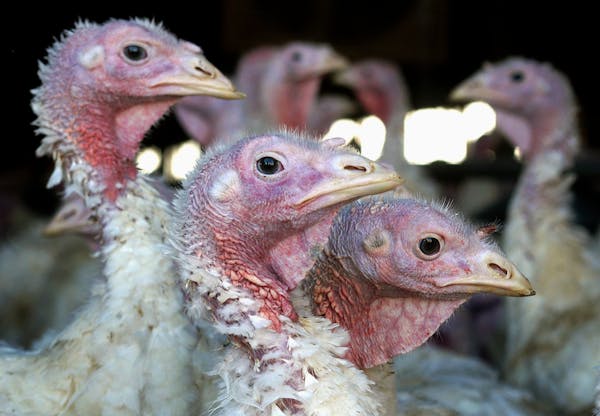The avian flu outbreak that began more than a year ago is still circulating widely among wild birds and mammals in the United States. But cases have greatly slowed in Minnesota, with the virus causing only three confirmed wildlife deaths in the past three months.
That's especially heartening because bird flu cases are typically at their worst during spring migration, said Victoria Hall, executive director of the Raptor Center at the University of Minnesota.
"Last year at this time we were flooded with them," she said.
Across the country, the U.S. Department of Agriculture has confirmed that the virus has killed more than 400 bald eagles, more than 300 great horned owls and hundreds of hawks and falcons along with thousands of ducks and geese. Scientists said those numbers are an undercount, as most of the sick and dead were not able to be tested.
The USDA has confirmed that the virus killed 101 wild birds in April across the country. That's down from nearly 600 during the same month last year, according to the USDA. Minnesota confirmed 11 bird flu deaths as of May 9 this year. That's down from 213 over the same time frame in 2022.
Minnesota, with its prominent place along the heart of the Mississippi Flyway and a strong testing program, has had the most confirmed wild bird deaths caused by the flu in the country since the outbreak started in January 2022.
The strain has jumped to a wide variety of mammals that were never thought to be at risk for bird flu, which in the past mainly infected poultry, waterfowl and the birds that eat waterfowl. This outbreak has killed foxes, bears, dogs, cats, cougars, dolphins and seals, raising the threat that it could mutate to something dangerous to humans.
While cases have slowed, it's too early to tell if the virus is actually waning, said Julianna Lenoch, national wildlife disease program coordinator for the USDA.
"This strain began in Europe and Asia a year before it came here, and they're still dealing with it over there," she said. "Then as North American birds flew south this winter, South American and Central American countries started seeing their first cases."
Bird flu killed more than 3,000 sea lions in Peru this spring.
The longer the virus circulates, the greater the chances for it to mutate and linger.
Lenoch said there is no consensus about how many more wild birds the virus has killed beyond those confirmed in a lab. For animals that are as recognizable and culturally important as bald eagles, golden eagles and California condors, many, if not most, deaths were likely reported, Lenoch said.
For more common birds that died en masse or are less likely to be reported, such as mallards and Canada geese, only a small percentage of the dead may have been tested.
There are promising signs: Minnesota wildlife officials and Raptor Center scientists have found a surprising number of eagles, hawks, owls and other predators with antibodies that show the birds had been infected but recovered from the strain, Hall said.
This strain of bird flu had seemed like an almost-certain death sentence for raptors in its early stages. When the Raptor Center nursed a female great-horned owl back to health in St. Paul last year, it was the state's first known case of a raptor surviving it.
The antibodies show that many wild birds can recover from the disease and perhaps are only getting mildly sick, Hall said.
This summer will be telling, as virus survivors lay eggs. Scientists will be closely watching the young to see if they inherited any of their parents' immunity, or if it looks like the next generation will suffer as badly as the prior one did.
"We're all very excited in the wildlife community that we're not seeing it come back as badly this spring," Hall said. "But it's definitely not gone, and it's something that I think we'll be dealing with for years to come."
Carolyn Parnell, 'trailblazer' who served as Minnesota's first IT commissioner, dies


